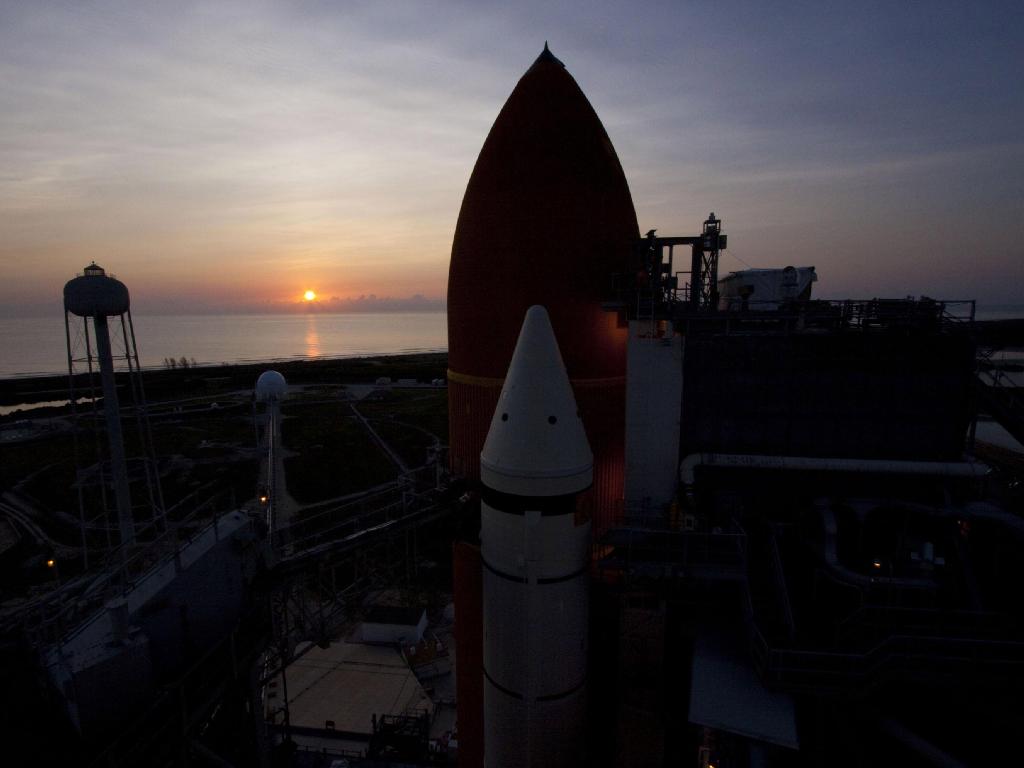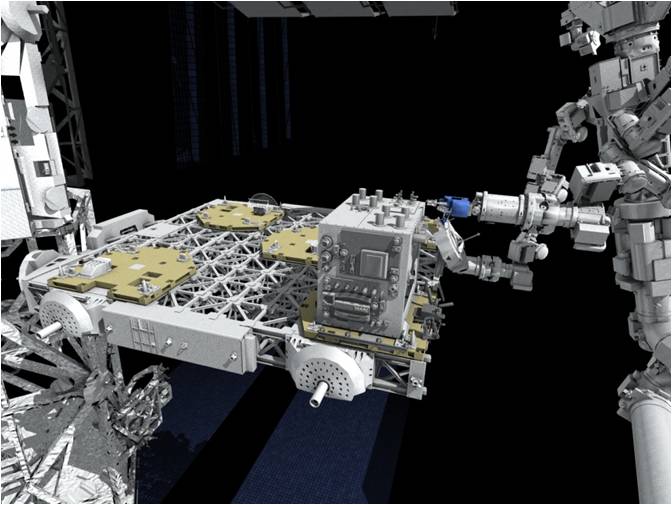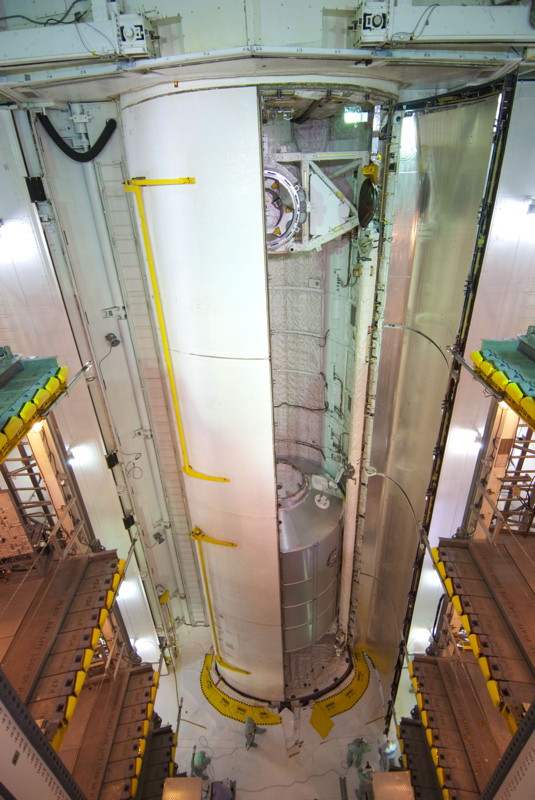
Final Space Shuttle Mission's Heavy Haul: Q & A With NASA Cargo Chief Joe Delai

NASA is just days away from launching Atlantis on the final mission of the agency's 30-year space shuttle program. This last flight will carry four astronauts and a cargo bay packed full of supplies and spare parts to the International Space Station.
Currently, NASA is aiming to launch Atlantis on Friday, July 8, at 11:26 a.m. EDT (1526 GMT) Launch Pad 39A at Kennedy Space Center in Cape Canaveral, Fla., to begin a 12-day delivery mission to the International Space Station. The cargo that will fly aboard Atlantis is packed away in the shuttle's payload bay, essentially a 60-foot space truck bed for cosmic hauls into orbit.
After Atlantis' flight, NASA shuttle fleet will be grounded for good and the space station program will no longer be able to rely on the enormous amount of cargo that the shuttles can carry into orbit. Atlantis's STS-135 flight will carry vital supplies and hardware to the space station to prepare it for the years following the end of the shuttle program. [9 Weird Things That Flew On NASA's Space Shuttles]

With final preparations underway, SPACE.com spoke to Joe Delai, the STS-135 payload manager, about the upcoming flight, and how Atlantis' cargo will help further the life of the International Space Station.
SPACE.com: What are the main items that Atlantis will be taking to the space station?
Joe Delai: We're bringing up the Multi-Purpose Logistics Module, which is called Raffaello. It's the fourth time that it has flown. What's unique about this MPLM is that it's the last MPLM that we're flying. We stowed quite a bit of cargo. The stowed capacity, volume-wise, is about 9,500 pounds. Now, volume-wise, this is probably the most that we've stowed. Not weight wise, because we've brought stuff up that was heavier, but volume-wise, we've got that MPLM really packed to the brim.
SPACE.com: Other than the MPLM, what else will be in Atlantis' payload bay?
Get the Space.com Newsletter
Breaking space news, the latest updates on rocket launches, skywatching events and more!
Delai: We're also flying an external carrier, and on that, we're bringing up an item called RRM – Robotic Refueling Mission. Basically its purpose is in preparation for future refueling and repair of on-orbit spacecraft. The RRM will perform what I call representative tasks.
It's going to test the concept of a robot refueling satellites in space. It's pretty neat. It'll test opening up valves, closing valves, taking caps off, transferring fuel. It's going to go through all that exercises. We're not flying any fuel on this, we're using ethanol just as a liquid, but it's going to test all those concepts.

On the other side of the external carrier, we have what is called the pump module adaptor plates. On July 31, 2010, the pump module failed on the [space station's] S1 truss. We've got a few spares up there, so of course we put a spare in and we're going to take this old one back and do some investigative work and see what's going on.
On the side wall carrier, we're flying a Pico satellite. We've flown that before. That's a [Department of Defense] mission and they'll do some tracking exercises on orbit.
SPACE.com: And what are some of the things that will be flying in the MPLM?
Delai: We've got supplies, we've got spare parts, and we've got personal stuff, of course. There are some station spare parts and some science spare parts. It's a little bit of everything.
SPACE.com: Is the Robotic Refueling Mission experiment going to remain on the space station, or is it flying up and down on Atlantis?
Delai: They're going to keep it up there. This mission's main purpose is to get it up there, get it installed and do some minor robotic exercises. Then in the future, there's going to be more demonstrations and more exercises. So they'll be using it in the future, too. [Photos: NASA's Prepares for Final Shuttle Flight]

SPACE.com: With this being the last shuttle mission, and the last time that the station program can take advantage of how much cargo the shuttle can bring up, for you, as payload manager, how much did that factor into the types of things you're bringing up, and also how you're managing the workflow?
Delai: When we do a nominal MPLM integration – getting all the back stow, getting it all on the racks, getting it checked out and getting the racks in – that's normally a four to five week flow for us. For this one, there are a couple things we were asked by the program. The first thing we were asked was to work with our design center to beef up the racks that hold the cargo. They wanted the racks to be beefed up to hold a couple hundred more pounds of weight. We worked with a design agency and came up with a viable method to increase the strength of the racks so they could hold more on each rack. [How NASA Prepares for the Final Space Shuttle Launch]
The second thing we did was we took what would normally take four or five weeks, and we did it in two weeks. What we wanted to do is to be able to keep the hatch open as late as possible, so we could get as much hardware into the MPLM. A lot of people want to fly certain things and they couldn't meet the original date, so we basically worked around the clock six days a week to get the MPLM ready for flight. What normally would take us five weeks, we did in two weeks. That helped with the program and allowed them to get more items into the MPLM. So, with the rack modification work that we did, and holding off to a later date and working a little extra time to process the MPLM, those were two big things that we've never done before and that helped the program when it came to getting all the stowed hardware into this MPLM.
SPACE.com: Was the workflow affected when Endeavour's first launch attempt scrubbed? When Atlantis' targeted launch date got pushed, did that make things more challenging, or was it helpful because you had more time?
Delai: We really stuck with our original schedule. We're going to go to the pad a few days early to help with the work flow at the pad. By pushing the five weeks of work into two weeks, that allowed the cargo to get [to Kennedy Space Center] a little later. When the launch date moved, everybody already knew they had to get their hardware here, so we decided to stick with it and go to the pad a little bit early to help out with the pad flow.
SPACE.com: Since this will also be the last flight for the Raffaello module, was there anything special done to mark that milestone?
Delai: Not really, I can't think of anything. For us personally, this is a mission. We have a job to do. We kind of treat this like all the other missions. Nothing has really changed. We have very dedicated people who have dedicated their lives to this program, so we've processed this mission like any other mission and we'll continue to do that.
You can follow SPACE.com Staff Writer Denise Chow on Twitter @denisechow. Visit SPACE.com for complete coverage of Atlantis' final mission STS-135 or follow us @Spacedotcom and on Facebook.
Join our Space Forums to keep talking space on the latest missions, night sky and more! And if you have a news tip, correction or comment, let us know at: community@space.com.

Denise Chow is a former Space.com staff writer who then worked as assistant managing editor at Live Science before moving to NBC News as a science reporter, where she focuses on general science and climate change. She spent two years with Space.com, writing about rocket launches and covering NASA's final three space shuttle missions, before joining the Live Science team in 2013. A Canadian transplant, Denise has a bachelor's degree from the University of Toronto, and a master's degree in journalism from New York University. At NBC News, Denise covers general science and climate change.









